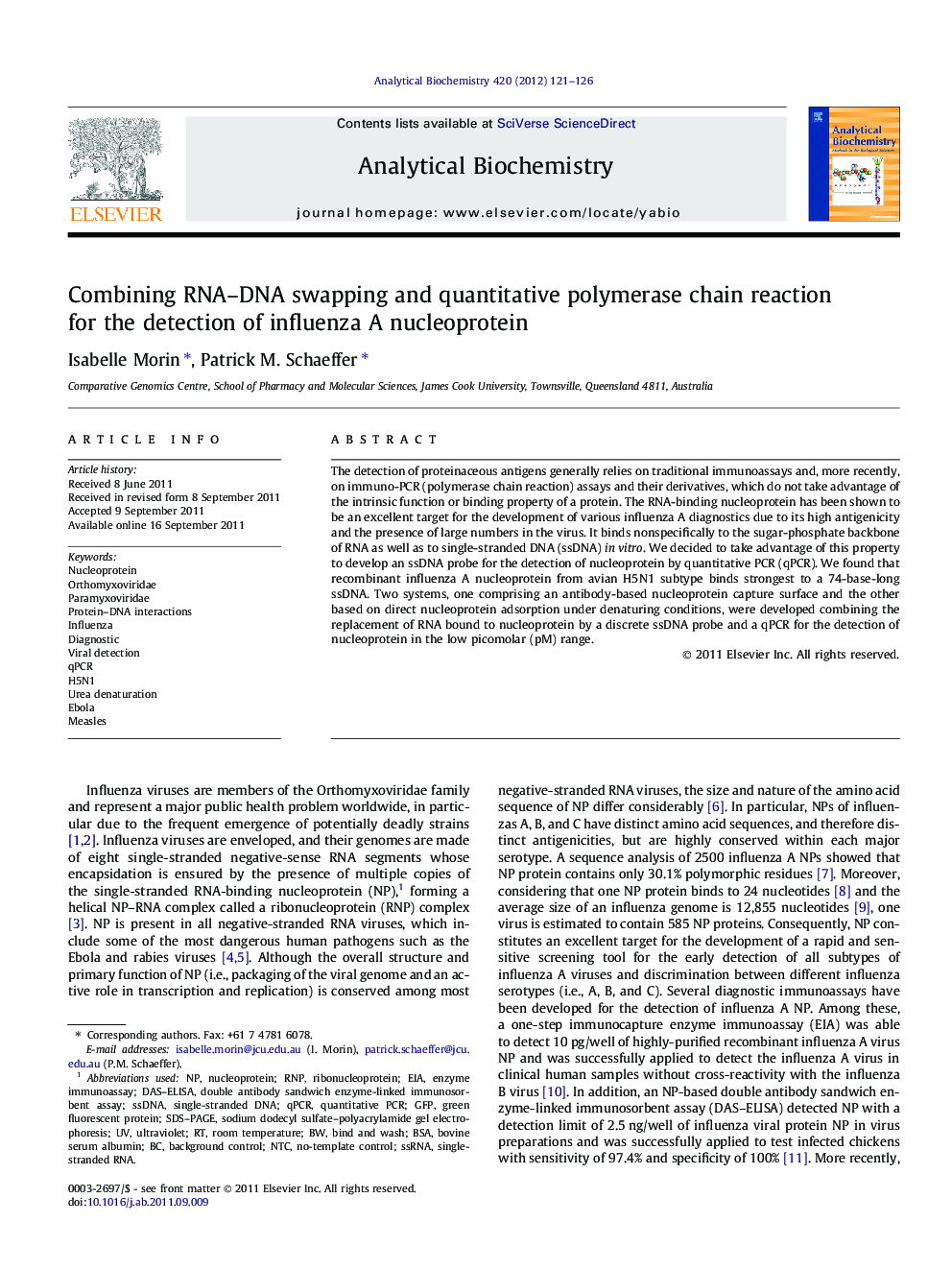| Article ID | Journal | Published Year | Pages | File Type |
|---|---|---|---|---|
| 7559633 | Analytical Biochemistry | 2012 | 6 Pages |
Abstract
The detection of proteinaceous antigens generally relies on traditional immunoassays and, more recently, on immuno-PCR (polymerase chain reaction) assays and their derivatives, which do not take advantage of the intrinsic function or binding property of a protein. The RNA-binding nucleoprotein has been shown to be an excellent target for the development of various influenza A diagnostics due to its high antigenicity and the presence of large numbers in the virus. It binds nonspecifically to the sugar-phosphate backbone of RNA as well as to single-stranded DNA (ssDNA) in vitro. We decided to take advantage of this property to develop an ssDNA probe for the detection of nucleoprotein by quantitative PCR (qPCR). We found that recombinant influenza A nucleoprotein from avian H5N1 subtype binds strongest to a 74-base-long ssDNA. Two systems, one comprising an antibody-based nucleoprotein capture surface and the other based on direct nucleoprotein adsorption under denaturing conditions, were developed combining the replacement of RNA bound to nucleoprotein by a discrete ssDNA probe and a qPCR for the detection of nucleoprotein in the low picomolar (pM) range.
Keywords
Related Topics
Physical Sciences and Engineering
Chemistry
Analytical Chemistry
Authors
Isabelle Morin, Patrick M. Schaeffer,
